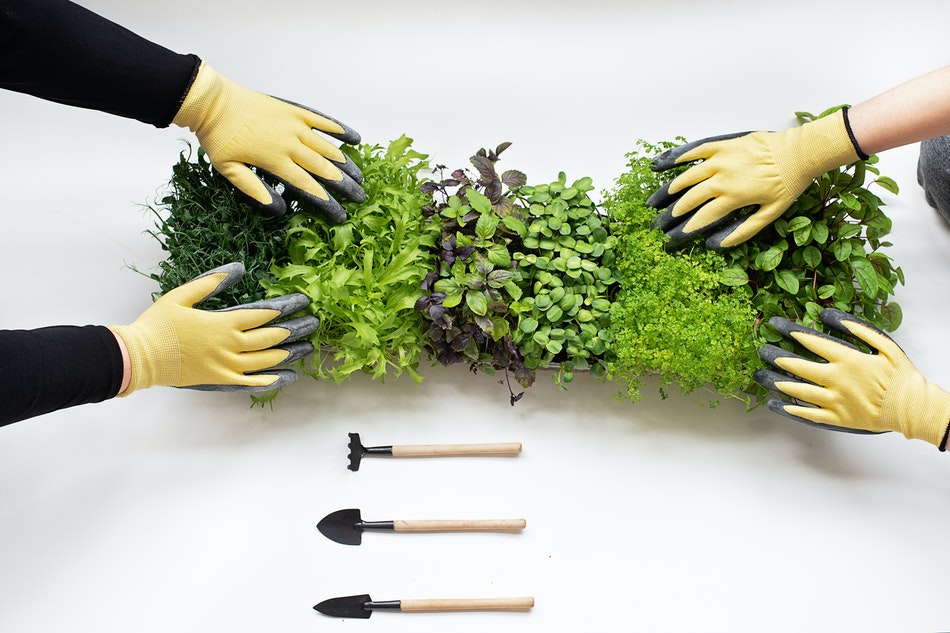Do you want to learn how to grow your microgreens but don’t have the space or soil for a garden? You’re in luck! In this article, I will discuss how to grow microgreens without soil. This is a great option for those who live in apartments or don’t have access to a garden. I will go over the different methods you can use and what supplies you need. Let’s get started!
The key to growing microgreens without soil is to use a medium that will hold moisture and provide nutrients. Some good options for growing microgreens without soil include vermiculite, peat moss, or coconut coir.
Benefits Of Growing Microgreens Without Soil
Microgreens are becoming increasingly popular among health-conscious individuals due to their high nutrient content. They are also very easy to grow and can be done without the use of soil. Here are four benefits of growing microgreens without soil:
- First, growing microgreens without soil are much easier than traditional gardening. There is no need to till the soil, weed the garden, or worry about pests. All you need is a container (such as a recycled plastic container), some drainage holes, and a light source.
- Second, growing microgreens without soil allow you to control the nutrients that your plants receive. When you grow in soil, you are at the mercy of the quality of the soil. By growing without soil, you can use a high-quality growing medium and add the exact nutrients that your plants need.
- Third, growing microgreens without soil eliminate the risk of crop contamination. Soil can contain harmful bacteria and fungi that can contaminate your food crops. When you grow without soil, there is no risk of contamination.
- Fourth, growing microgreens without soil are much more space-efficient than traditional gardening. You can grow microgreens on a windowsill, countertop, or even in a closet! This makes them perfect for small apartments or homes with limited outdoor space.
If you are looking for a healthy, easy-to-grow option for your home garden, consider growing microgreens without soil. You’ll be amazed at the healthy harvests you can produce in a small space with very little effort.

How To Grow Microgreens Without Soil
Microgreens are a type of vegetable that is harvested when the plant is young- usually between one and three weeks old. They are packed with nutrients and have a bright, fresh flavor that makes them a great addition to any dish.
While microgreens can be grown in soil, you can also grow them without soil using a method called hydroponics. Hydroponics is a type of gardening that uses nutrient-rich water instead of soil to grow plants.
If you want to try growing microgreens without soil, here are a few things you need to do:
- First, you need to find a container that is deep enough to accommodate the roots of your microgreen plants. A plastic storage container or a growing tray with holes drilled in the bottom will work perfectly.
- Next, you need to fill your container with a hydroponic growing medium. There are many different types of hydroponic growing mediums available, but coco coir and perlite are two good options.
- Once you have your container and growing medium set up, it’s time to add some water. You’ll need to use water that is rich in nutrients, so either uses a nutrient-rich solution or add some fertilizer to your tap water.
- Now it’s time to plant your microgreen seeds! Simply sprinkle them onto the surface of the growing medium and lightly mist them with water. Make sure to keep the seeds moist by misting them with water every day.
Within a few days, you should see your microgreen seeds begin to germinate and grow. Once they reach about two inches tall, they are ready to harvest. To do this, simply cut the plants at the base with a sharp knife or scissors.
And that’s all there is to it! Growing microgreens without soil is a fun and easy way to get your greens fixed indoors. Give it a try and see how you like it!

Can Microgreens Grow In Water?
Yes, microgreens can grow in water. However, they will not be as healthy as if they were grown in soil. The reason for this is that plants need nutrients from the soil to grow properly. If you are growing microgreens in water, you will need to add a nutrient solution to the water so that the plants can get the nutrients they need. Adding a nutrient solution to the water is not difficult, but it is something that you need to do if you want your microgreens to be healthy.
Another option for growing microgreens is to grow them in coco coir. Coco coir is a type of material made from coconut husks that can be used as a growing medium. It has many of the same properties as soil, but it is lighter and easier to work with. Coco coir can also be used to grow microgreens in water. If you are using coco coir, you will still need to add a nutrient solution to the water.
Is It Better In Water Or The Soil?
There are pros and cons to both methods, but ultimately it depends on the type of microgreen you want to grow. If you’re looking for a more delicate flavor, growing in water may be the way to go. However, if you want a heartier green, growing in the soil will give you a better yield.
No matter which method you choose, make sure your container is clean and sterile. This will help prevent any mold or bacteria from contaminating your crop. You’ll also want to make sure your microgreens have plenty of light – they need at least six hours of sunlight per day.
If you’re still not sure which method is best for you, why not try both and see what results in you get? You may be surprised at how different the flavor of your microgreens can be.
Final Words
Microgreens are easy and inexpensive to grow, and they offer several benefits over other types of greens. With a little effort, you can enjoy fresh, healthy microgreens year-round.
What are your favorite microgreens to grow? Let me know in the comments below. And be sure to check out our other gardening tips and tricks for more ways to get the most out of your garden.
Related Articles

